In this extensive guide, we’ll dig into stunning summer flowers that will not only elevate your porch but also create an inviting atmosphere all season long.
Petunia
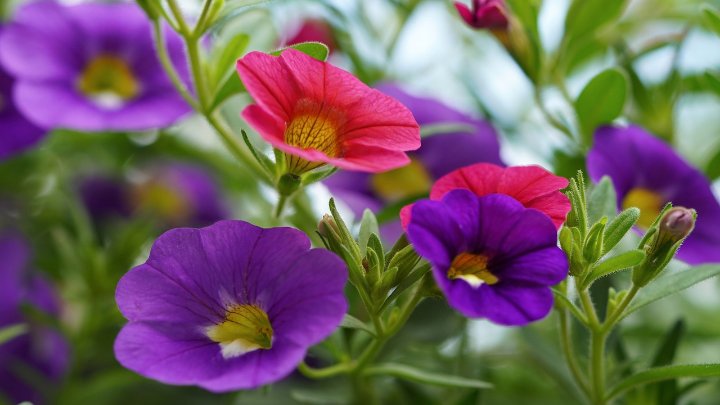
Petunias are summer classics beloved for their rich, vibrant colors and sprawling nature. Available in hues ranging from soft pastels to bold primaries, petunias are highly versatile and bring life to any container or garden bed. They thrive in full sun, requiring at least 6 hours of sunlight daily, which makes them perfect for sunny porches.
Care Tips: Regular watering is essential, especially during dry spells. Deadheading—removing spent flowers—promotes continuous blooming. You can also benefit from a light application of fertilizer every few weeks to keep them vibrant. With their pleasant, light fragrance, petunias can infuse your porch area with a refreshing aroma, enhancing your outdoor experience.
Design Idea: Use petunias in window boxes for cascading blooms or pair them with contrasting foliage plants like potato vine for a striking combination.
Geranium
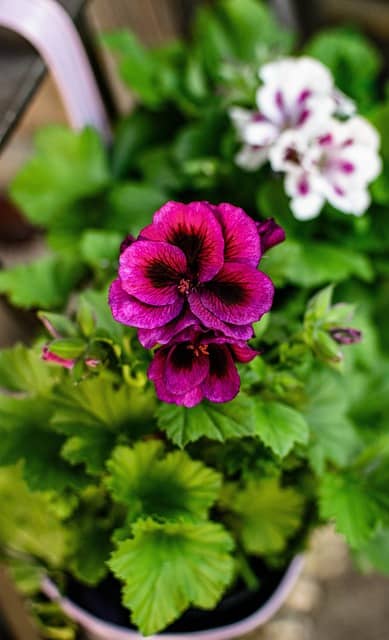
Geraniums are a timeless choice, celebrated for their resilient nature and delightful clusters of colorful flowers. Whether you choose zonal, ivy, or species geraniums, these plants are simple to care for and thrive in sunny locations.
Care Tips: Keep geraniums well-watered but avoid waterlogged soil, as they are prone to root rot. Regular deadheading helps maintain their blooming periods, and applying a balanced fertilizer can ensure they grow strong and lush.
Design Idea: Geraniums work wonderfully in traditional clay pots or under benches for an elegant rustic touch. Group different colors together to create a vibrant display.
Marigold
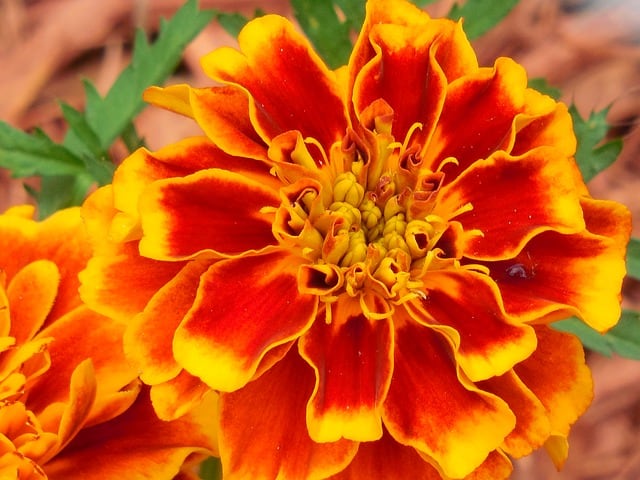
Marigolds are synonymous with sunny gardens, and their cheerful blooms can instantly elevate the atmosphere of any porch. With colors ranging from bright oranges to deep reds, marigolds are excellent for attracting pollinators like bees and butterflies while offering pest-repelling properties.
Care Tips: Marigolds prefer sunny spots and can tolerate drought well, but they benefit from regular watering. They can thrive in various soil types, making them ideal for containers or garden beds alike.
Design Idea: Plant marigolds in mixed containers along walkways or use them to create borders around your porch area. Their eye-catching hues complement other flowers beautifully.
Zinnia
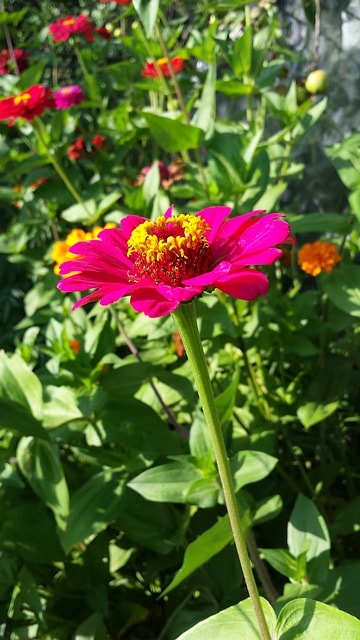
Zinnias are known for their bold, vivid colors and ability to bloom profusely, making them a fantastic addition to any summer porch display. Available in various heights— from dwarf varieties to taller types—zinnias thrive in warm weather and are particularly well-suited for sunny spots.
Care Tips: Zinnias thrive in full sun and require well-drained soil. Regular watering encourages continuous blooming; however, it’s crucial to allow the soil to dry slightly between watering sessions to prevent rot.
Design Idea: Use zinnias in a mixed container with sunflowers or cosmos for a bright, cheerful display. Their long stems make them perfect for cutting; you can bring the summer color inside!
Begonia
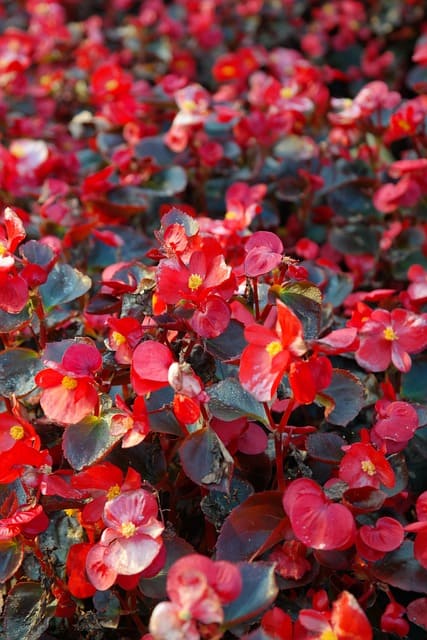
Begonias are ideal for shady porches, offering an abundance of colorful blooms in various forms. Their waxy leaves and vibrant flowers flourish in cooler conditions, making them particularly useful for areas that don’t receive direct sunlight.
Care Tips: Begonias prefer moist soil, so regular but moderate watering is essential. Avoid letting the soil dry out completely. Fertilizing every four to six weeks during the growing season will promote stronger growth and more blooms.
Design Idea: Talk a look at the differences between tuberous and fibrous begonia types. Mixing them in a single porch arrangement can add unparalleled texture and color.
Lobelia
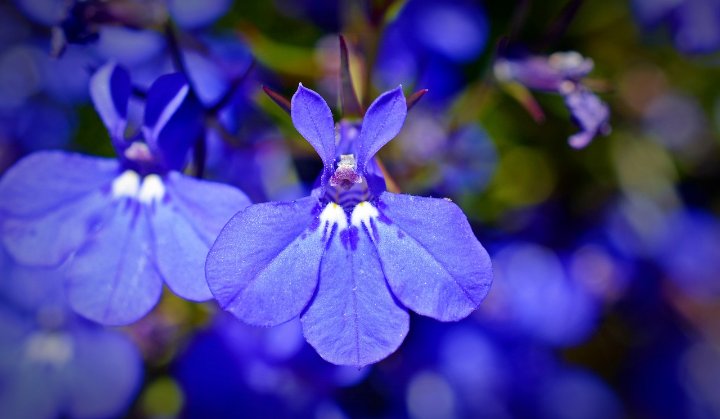
Lobelia dazzles with its trailing growth and delicate blooms, making it an excellent choice for hanging baskets or window boxes. Their vibrant blue, purple, or white flowers can create a lovely cascade of color that can soften any porch edge.
Care Tips: Lobelia prefers cooler temperatures and partial to full sun. Keep the soil evenly moist, especially during hot weather, but ensure proper drainage to prevent rot.
Design Idea: Pair lobelia with upright flowers for a layered effect. Their long-lasting blooms create a stunning visual contrast next to the sturdier blooms of petunias or geraniums.
Impatiens
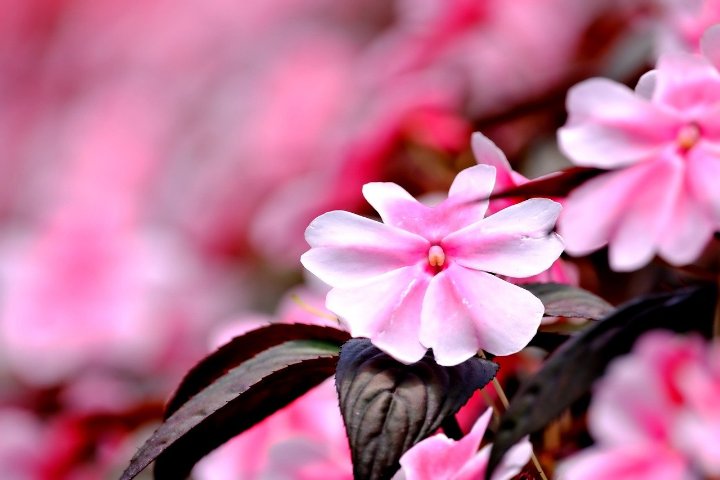
For those areas of your porch that lack sunlight, impatiens are a go-to option, bringing vibrant color to shaded settings. With a wide range of colors available, they can create a cheerful display even in low-light areas.
Care Tips: Impatiens like consistent moisture, so water them regularly to keep the soil consistently moist but not soggy. Applying a balanced liquid fertilizer every couple of weeks helps promote blooming throughout the season.
Design Idea: Use impatiens in pots to provide a lush border around furniture or in shady corners of your porch to brighten the space.
Sunflower
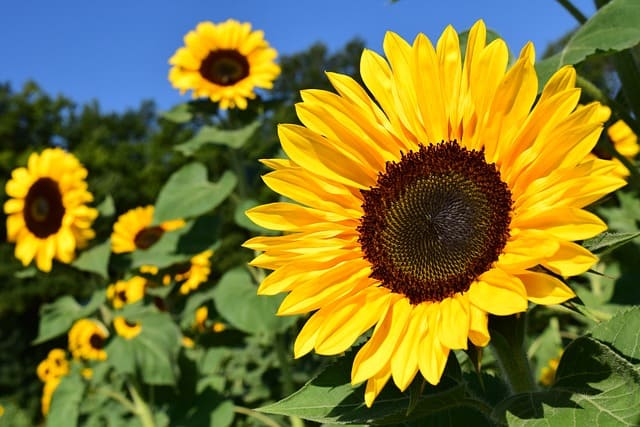
Dwarf sunflowers are perfect for small pots or containers while still retaining their trademark sunny disposition. They thrive in direct sunlight and can grow surprisingly fast, creating an impressive display in no time.
Care Tips: Sunflowers prefer well-drained soil and must be watered regularly until established. Once they start growing, they can handle some drought but will bloom better with adequate moisture.
Design Idea: Position dwarf sunflowers at the edge of a pot surrounded by lower-growing flowers for a joyful pop of color that can draw attention.
Fuchsia
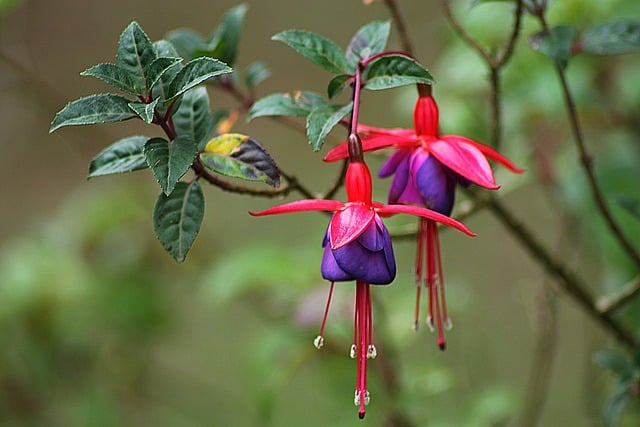
Fuchsias are an elegant option for hanging arrangements, with their cascading blooms creating a stunning visual effect. Ideal for shaded areas, they produce flowers in vibrant pinks, purples, and whites, attracting hummingbirds and adding a lovely dynamic to your space.
Care Tips: Fuchsias thrive in cool, moist environments, so keep them in well-draining soil and watering regularly. Removing spent flowers promotes additional blooming.
Design Idea: Hang fuchsias in decorative baskets at varying heights to create a whimsical effect. Their elegant drops can contrast beautifully with upright flowers in surrounding arrangements.
Nasturtium
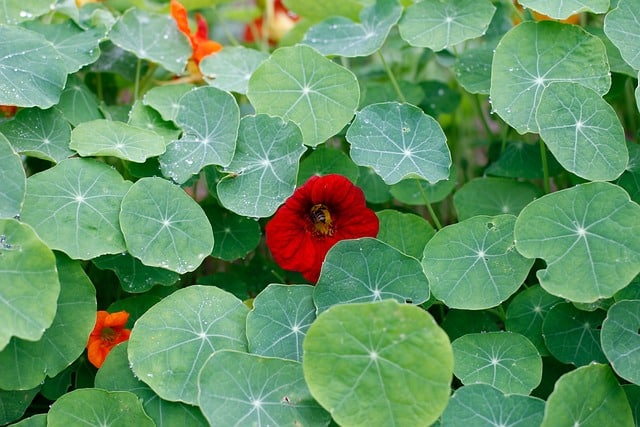
The edible nasturtium brings not only beauty but utility to the porch. With brightly colored flowers that have a peppery flavor, these plants thrive in sunny spots and can trail over the edges of containers, creating a lush, vibrant display.
Care Tips: Nasturtiums prefer well-drained soil and regular watering but can tolerate some dryness. They’re known for being low-maintenance, requiring minimal care while still producing gorgeous blooms.
Design Idea: Utilize nasturtiums in both containers and ground planting. Their trailing nature makes them lovely cascading down from hanging baskets or as ground cover around taller plants.
Salvia
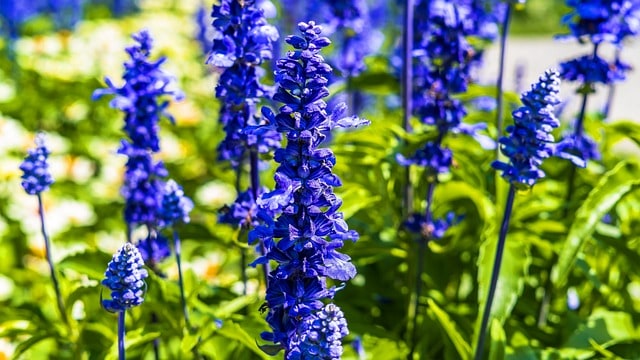
Salvia plants showcase tall spikes of colorful blooms that are eye-catching and attract hummingbirds and butterflies. These hardy plants are resistant to drought and bring vibrant color to your porch even during the hottest days.
Care Tips: Salvia prefers sunny locations and well-drained soil. Be sure to water them regularly until established, and they will flourish with minimal upkeep.
Design Idea: Plant salvia in containers that allow their tall growth to tower above lower flowers like petunias or zinnias, creating dramatic vertical interest.
Verbena
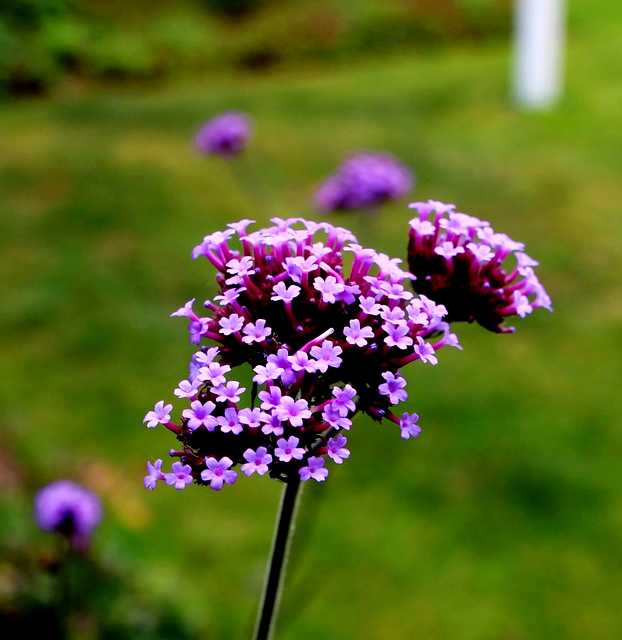
Verbena flowers create a vibrant carpet of color that’s perfect for sunny porches. Known for their sprawling growth, verbena can provide excellent filler in large containers or tumbling over hanging baskets.
Care Tips: Verbenas thrive with moderate watering but can tolerate some drought. Deadheading spent blooms encourages ongoing flowering, and they require minimal fertilization to thrive.
Design Idea: Use verbena as a filler graft alongside taller plants like salvia, creating waves of color in your arrangements.
Cyclamen
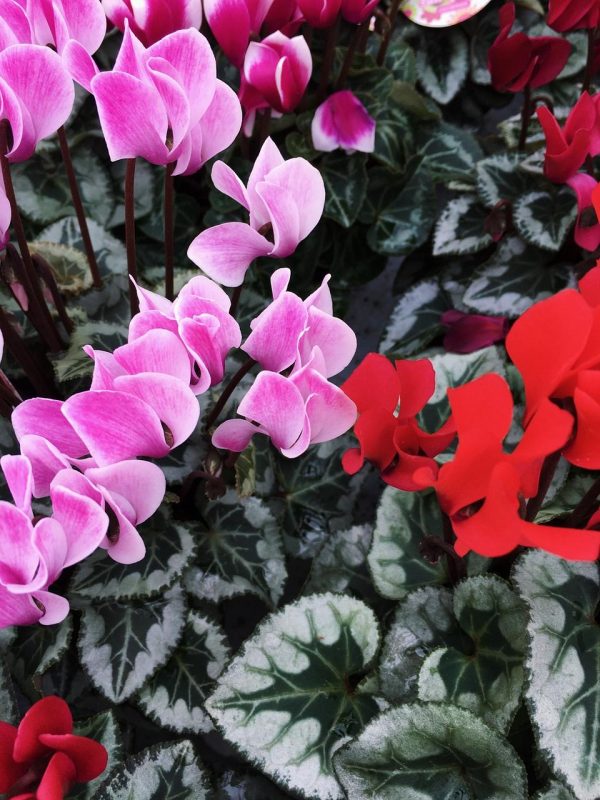
While less traditional for summer bloom, certain cyclamen varieties can thrive on sheltered porches. Their unique flowers elegantly rise above heart-shaped leaves, adding interest to shaded areas.
Care Tips: Cyclamen prefer indirect sunlight and well-draining soil that remains moist but never soggy. They tend to fare best in cooler temperatures.
Design Idea: Group cyclamen with darker foliage plants for a stunning contrast that adds texture and layers to your arrangements.
Coreopsis
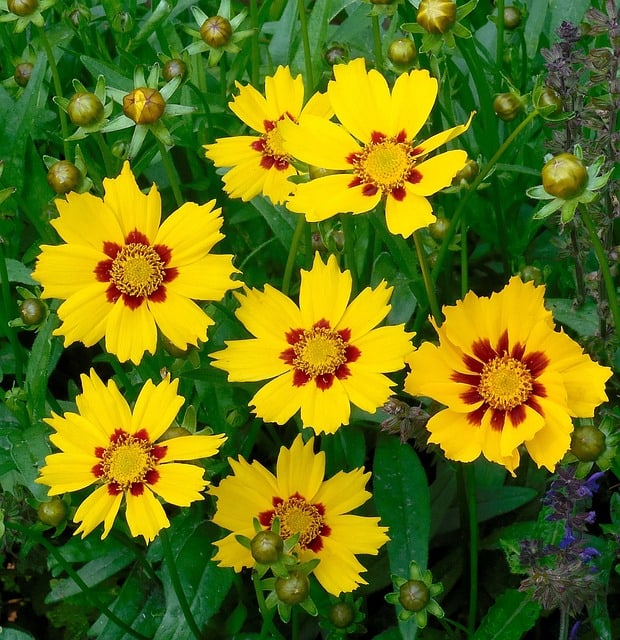
Coreopsis, or tickseed, features cheerful daisy-like flowers that thrive in sunny conditions and attract butterflies to your garden. These hardy plants are versatile and can tolerate poor soil, making them ideal for low-maintenance gardening.
Care Tips: Coreopsis requires regular watering during dry periods but is otherwise low-maintenance. Pruning back after the first bloom encourages further growth and additional blooming.
Design Idea: Use coreopsis to create a border flower bed along the sides of your porch, offering a flutter of color as you enter or exit.
Snapdragons
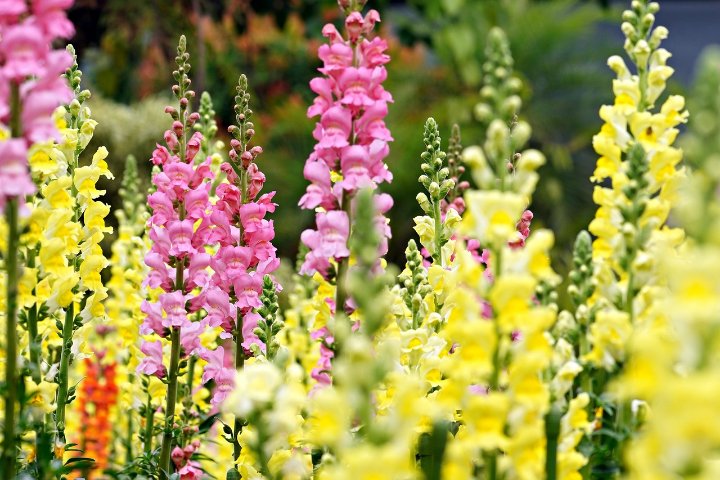
With their unique flower shapes resembling dragon mouths, snapdragons add whimsy to your expectations of summer blooms. They are available in various colors and at different heights, making them versatile for garden or container planting.
Care Tips: Snapdragons enjoy full sun and appreciate regular watering to keep the soil slightly moist. Deadheading will encourage additional blooms, extending their vibrant presence throughout the summer.
Design Idea: Snapdragons can serve as dramatic vertical accents in mixed containers, standing tall among shorter flowers. They also make wonderful cut flowers for indoor vases.
Osteospermum
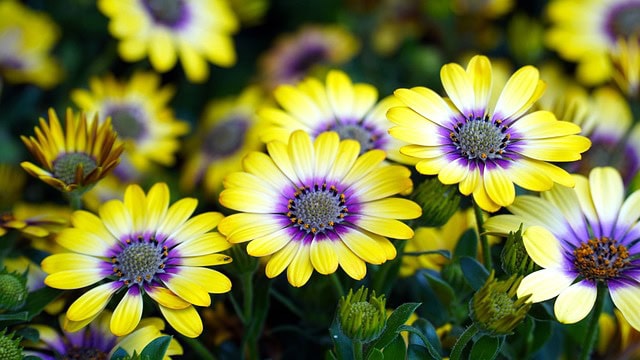
Osteospermum, or African daisies, are known for their vibrant, unique colors and ability to bloom non-stop throughout summer. Often closing at night, these flowers offer a dynamic visual experience that changes throughout the day.
Care Tips: These flowers thrive in full sun and tolerate low water conditions, so allow the soil to dry slightly between waterings. They’re happy in poor soil, making them a great low-maintenance choice.
Design Idea: Plant osteospermum in mixed patio containers alongside other drought-tolerant plants for an eye-catching, vibrant display that requires minimal care.
Allium
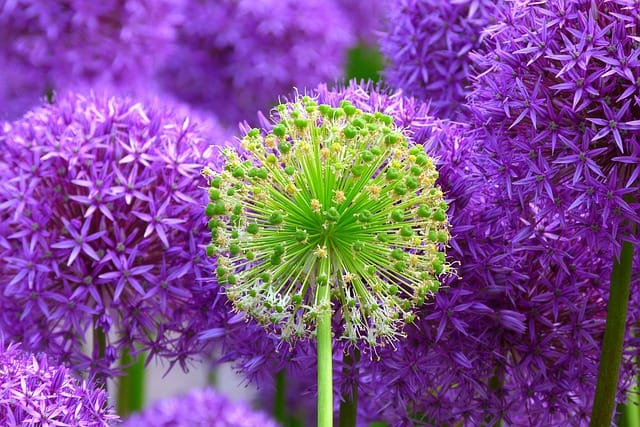
Alliums add a unique architectural focus to your porch, with their round clusters of small flowers on tall stems. While most common in their traditional garden forms, many dwarf varieties work beautifully in containers.
Care Tips: Alliums thrive in well-drained soil and prefer full sun. They are drought-tolerant once established and don’t require extensive care.
Design Idea: Incorporate alliums in mixed pots to create height variation. Their sturdy stems contrast brilliantly with flowing plants like lobelia or petunias.
Dwarf Cosmos
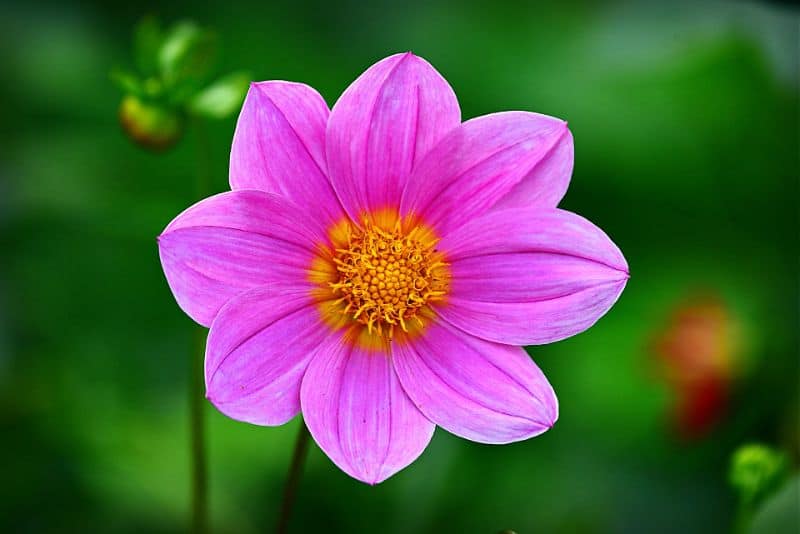
Dwarf cosmos bring delicate flowers and a whimsical charm to your summer porch. They thrive in well-drained soil and can bloom continuously throughout the summer, adding color and movement with their thin stems.
Care Tips: Plant dwarf cosmos in sunny locations, and allow the soil to dry slightly between watering. Regular deadheading helps maintain blooming.
Design Idea: Create a casual, carefree arrangement by mixing dwarf cosmos with zinnias and sunflowers, cultivating a playful summer garden feel.
Heliotrope
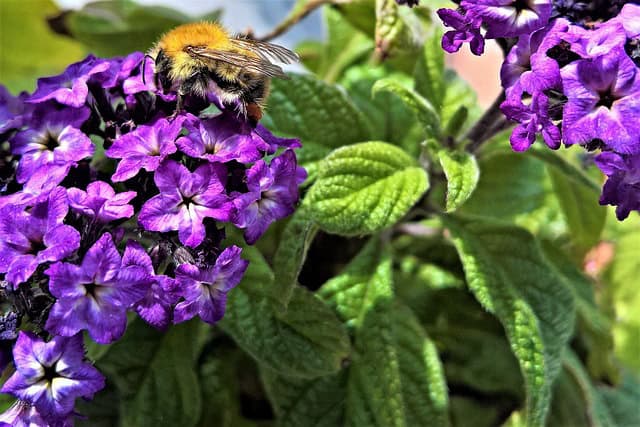
Heliotrope is cherished for its delightful fragrance and ability to attract pollinators, perfectly enhancing your porch’s atmosphere. With their clusters of purple or blue blooms, they provide beauty and aroma in equal measure.
Care Tips: Heliotropes prefer well-draining soil and partial to full sun. Keep them watered moderately, taking care not to let them dry out completely.
Design Idea: Plant heliotropes near seating areas for a fragrant experience, allowing their delightful aroma to waft through your outdoor space as you relax.
Calibrachoa
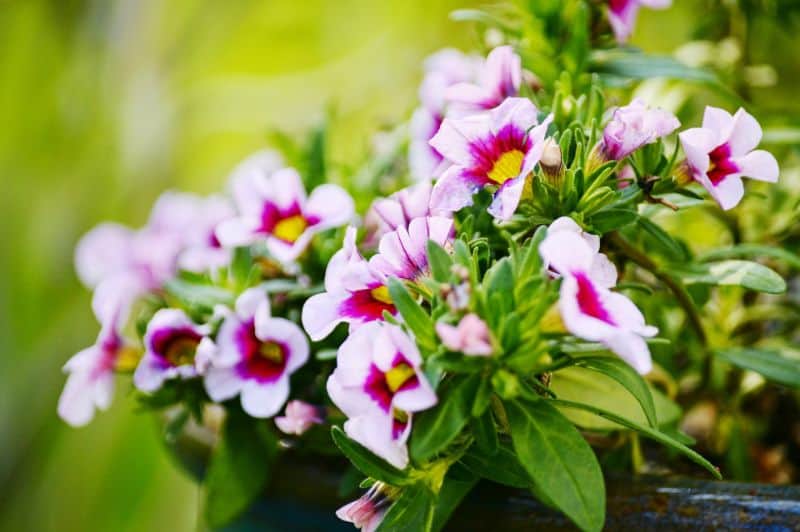
Calibrachoa, also known as million bells, offers abundant trailing flowers perfect for containers and hanging baskets. They come in vibrant colors and don’t require as much care as the traditional petunia, making them excellent for busy gardeners.
Care Tips: These flowers prefer full sun and well-drained soil. Water them regularly but enable the soil to dry out between watering sessions as they prefer drier conditions.
Design Idea: Use calibrachoa in combination with fuchsias or trailing ivy to create a layered, textured display that’ll make your porch lively and captivating.
Asparagus Fern

This fern may not be a flowering plant but offers an elegant texture that enhances the overall appearance of your floral arrangements. With delicate, feathery foliage, it adds a lush and vibrant green contrast among colorful blooms.
Care Tips: Asparagus ferns thrive in indirect sunlight and prefer well-draining soil. Regular watering helps keep the soil moist without becoming waterlogged.
Design Idea: Incorporate asparagus ferns into containers to create a beautiful backdrop for colorful blooms or as a filler plant in window boxes.
Petchoa

Combining the best traits of both petunias and calibrachoas, petchoas are excellent choices for vibrant container gardens. These hybrids offer long-lasting blooms that can withstand heat and are resistant to fading.
Care Tips: Petchoas thrive in full sun and require regular watering to keep them blooming abundantly. Fertilizing every few weeks can help maintain their health and vitality.
Design Idea: Use petchoas in mixed planter arrangements with sunflowers and celebratory colors to create vibrant, radiant displays.
Phlox
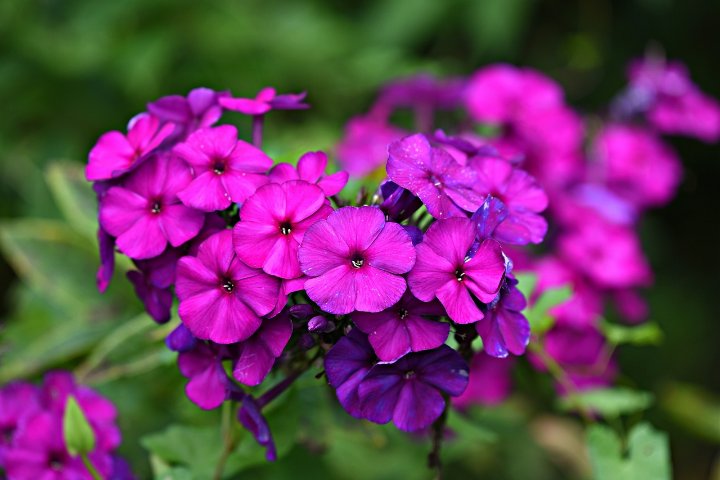
Phlox flowers are remarkable for their rich color, pleasant fragrance, and ability to attract butterflies to your porch. They thrive in sunny spots and can create stunning borders along your porch area.
Care Tips: Regular watering and consistent moisture are vital for phlox. They benefit from occasional deadheading and are hardy in various soil types.
Design Idea: Arrange phlox in mixed containers or as foundational plants around your porch entrance, allowing their vibrant blooms to welcome guests.
Echinacea
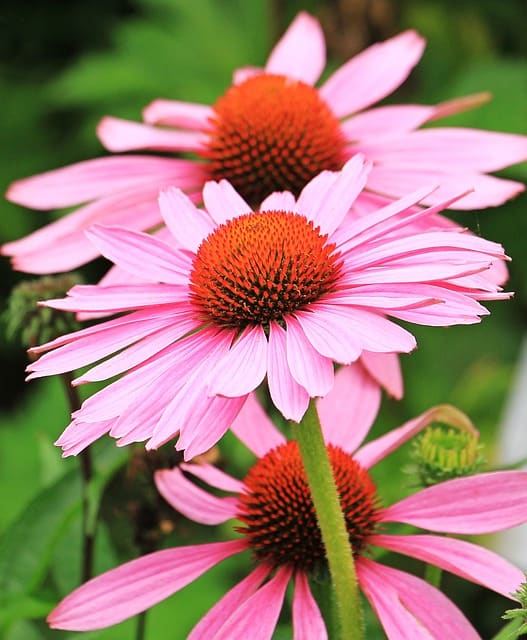
Echinacea, or coneflower, combines beauty and resilience, making it a wonderful addition to your porch. Known for their sturdy blooms and ability to attract pollinator bees, these flowers bring color and life to your summer space.
Care Tips: Echinacea prefer full sun and can withstand dry spells, allowing them to flourish in varying conditions. Regular watering while young promotes quick establishment.
Design Idea: Plant echinacea amongst shorter flowers like marigolds or zinnias to create a tiered effect that draws the eye upward, creating a garden haven.
Sweet Allysum
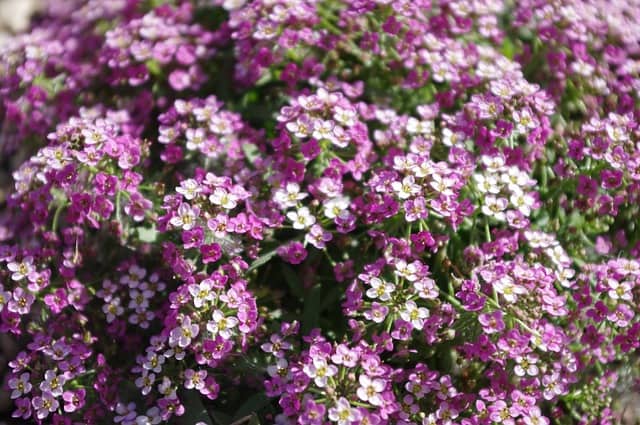
Sweet allysum is enchanting with its petite blooms and lovely fragrance, adding a whimsical touch to your floral arrangements. These flowers thrive in full sun and can flourish in warmer climates, offering a beautiful variety for softening edges in garden beds.
Care Tips: Allysum appreciates consistent watering to keep the soil moist but should have well-draining conditions. Regular trimming helps promote compact growth.
Design Idea: Use sweet allysum as a border accent or filler around taller flowers, where their petite blooms can bring a lovely softness to the overall arrangement.





